A356 aluminum diecasting gives a tensile strength of around 220–320 MPa and a yield strength of 160–180 MPa. This feature makes A356 aluminum a good choice for die casting. These aluminum alloys are the composition of Al, silicon, and other trace segments. You can easily heat treat it to enhance mechanical properties using T6 tempering method.
In this article, you will learn about the basics of A356 aluminum across the automotive and aerospace fields. Additionally, understand A356 aluminum composition, advantages, casting process, and heat treatment.
What is A356 Aluminum and Its Composition
Aluminum alloy A356 is mainly utilized to manufacture integral parts. It diminishes weight without breaching strength. This alloy drastically possesses incredible corrosion resistance, fluidity, an impressive strength-to-weight ratio, and considerable attributes.
Its microstructure is integrated with plenty of divisions. That pertains to aluminum dendrites, eutectic silicon, and iron-bearing intermetallic particles with the Mg2Si equilibrium phase.
Typically, the composition of aluminum alloy A356 is retained:
- 05% aluminum
- 7% (Si) silicon
- 35% (Mg) magnesium
- 2% (Cu)copper
- 2% (Fe) iron
- 1% (Zn) zinc
- 1% (Mn) manganese
Standards and Specifications for A356 Aluminum
The specific standards and prerequisites of applications are crucial factors in casting aluminum alloy. The American Society of Testing and Materials (ASTM) evolved these standards and specifications. This noteworthy factor is subject to enhancing the safeness and grade of projects. That is fabricated with the preference of industrial and consumer usage.
ASTM B618 Standards for A356 Aluminum Die-Casting
Accordingly, ASTM B618 is addressed as the standard and specification of aluminum 356 alloy casting. It is employed for general-purpose applications. It involves the chemical composition of castings. The diecasters adopt chemical or spectro-chemical practices to specify the standard of products.
SAE AMS-A-21180 Standard for A356 Aluminum Die-casting
The SAE AMS-A-21180 criterion for A356 aluminum casting is the specification. That is concerned with aluminum casting’s superior strength. It covers the following attributes necessary for military, aerospace, or defense sectors:
- Dissolution of 6 alloys
- Four inspection classes
- Four radiographic quality grades
- Six mechanical properties classes
Properties of A356 Aluminum
Understand the pivotal mechanical and physical properties of A356 aluminum alloy in both its as-cast (F) and T6 heat-treated conditions:
| Mechanical Properties | ||
| Property | As-Cast (A356-F) | T6 Heat-Treated |
| Tensile Strength | 160 MPa | 260 MPa |
| Yield Strength | 95 MPa | 228 MPa |
| Elongation | 10.7% | 6-10% |
| Hardness (Brinell) | 55 HB | 70 HB |
| Density | 2.68 g/cm³ | 2.68 g/cm³ |
| Physical Properties | |
| Property | Value |
| Density | 2.68 g/cm³ |
| Melting Point | 570 – 580°C |
| Thermal Conductivity | 151 – 159 W/m·K |
| Linear Expansion Coefficient | 21.5 – 23.5 × 10⁻⁶ /°C |
| Specific Heat Capacity | 963 J/kg·°C |
| Electrical Conductivity | 33 – 36 % IACS |
A356 Aluminum for Automotive and Aerospace
The aluminum alloy A356 and the high integrity shaped cast particles have drawn the drastic attention of the automotive and aerospace industries. This is because of the increasing demand for weight reductions in vehicles. Furthermore, it is employed in an array of developments to enrich the fuel efficacy and emission control intents. Discover the following fundamental properties of A356 aluminum for automotive and aerospace:
- High Strength-to-Weight Ratio
- Excellent Castability and Fluidity
- Corrosion Resistance and Durability
- Good Weldability
High strength-to-Weight Ratio
The assortment of lightweight features and optimal strength-density ratio make the A356 alloy suitable for aerospace and automotive verticals.
The density of Al alloy A356 is about 2.68 g/cm3. That is lower than other metals, like steel.
Moreover, the induction of magnesium with A356 augments the tensile and yield strength after T6 heat conditioning.
Excellent Castability and Fluidity
The aluminum alloy 356 exhibits excellent castability and fluidity characteristics. Its low melting point and fluidity smooth the filling into the mold cavity. That reduces the chance of shrinkage.
In particular, it is preferable for manufacturing complex-shaped parts of aerospace and automotive enterprises.
Apart from this, the castability of the A356 variant enables the die casters to produce the outputs with qualitative finishes.
Corrosion Resistance and Durability
The exceptional resistance to corrosion and durability facets of alloy A356 account for its ability. This alloy can persist in harsh circumstances and prevent the particulate from causing rust. That is why it is marvelously harnessed in the aerospace and marine sectors, where applications are exposed to outdoor atmospheres.
Good Weldability
Inducing the alloy A356 with silicon content minimizes the hot cracking fault during welding. This alloy exposes good weldability. That allows the metalworkers to generate integral parts with delicate shapes and functional ability. This is preferable for aerospace and automotive applications where the product requires high weld integrity.
Advantages of A356 Aluminum Casting
Advantages for the Automotive Sector
Implementing alloy 356 casting enables the engineer to produce the automotive parts of complex geometries with functional performance. Their lightweight features bolster the fuel efficiency of vehicles, which is in demand nowadays. Some of the most common applications of the automotive industry made from A356 die casting are:
- Engine blocks
- Cylinder heads
- Wheels
- Suspension Parts
Engine blocks
Utilizing A356 casting in engine blocks reduces the undesirable weight factors. It permits heightened fuel efficacy and provides compelling combinations of heat dissipation and lower operating temperatures. That is necessary for the engine to run for a long time.
Cylinder heads
A356 die casting prevents the chances of rusk on cylinders. It provides excellent castability to avoid shrinkage faults. That led to the generation of quality finished cylinder heads of complex shapes.
Wheels
Wheels are the most apparent part of the vehicle. That challenges harsh environments and unstable roads. Aluminum A356 protects the wheel structure from rustiness and ensures longer-lasting and more reliable performance.
Suspension Parts
A356 alloy casting poses significant fatigue qualities toward suspension components. That experience continuous stress. It supports improving the integrity and longevity of the applications.
Advantages for the Aerospace Sector
The aerospace industry has constantly evaluated novel technology and innovations. It continuously improves the dependability and functionality of the materials and employed components, including the safety driver.
In particular, the leverage of aluminum A356 is pivotal. It has been utilized for an array of applications in the aerospace sector. That contributed to the efficient enactment and safety of aircraft. Check out a few aerospace parts mentioned below fabricated via A356:
- Aircraft Structures
- Spacecraft Parts
- Aircraft Interiors
- Wheels
Aircraft Structures
Aluminum alloy A356 die casting is exploited to strengthen the structural integrity of aircraft elements. Its lightweight attributes and strength make it superior for fabricating structural yields. That involves wing and fuselage components, landing gear, and engine parts.
Spacecraft Parts
The material A356 is a noteworthy element for constructing spacecraft and satellite applications. It can resist the rigors of a space context.
Aircraft Interiors
Because of the unweighted and corrosion-resistant traits of A356, it is utilized to assemble seat frames, cabin walls, and non-structural components.
Landing Gear and Wheels
Vehicle and aircraft applications’ wheels and landing gear require tremendous strength and wearability to withstand harsh temperatures. Aluminum alloy die casting provides pivotal strength and thermal stability.
Casting Methods for A356 Aluminum
The diecasters should choose the preferred methods. Weigh the features of the alloy based on the production demands. Notably, there are three primary techniques for casting aluminum A356 alloy:
- Permanent Mold Casting for A356 Aluminum
- Plaster Casting for Complex Designs
- Investment Casting for Precision Components
Permanent Mold Casting for A356 Aluminum
The permanent mold casting approach is also called gravity die casting. In this phase, the alloy A356 is melted at the required temperature. Then, the molten material is flowed into the reusable steel or iron mold. After the purification, the metal is left to cool or solidify. The mold is vacated to leave the produced metal part.
Advantages:
- Provide excellent mechanical properties
- Cost-effective
- Reusable molds
- Rapid solidification
- Produce complex parts with a qualitative finish.
- Allows the creation of grain structure
- Provide exceptional strength compared to sand casting.
Plaster Casting for Complex Designs
The initial step in plaster casting is to develop the pattern. Use rubber or metal to form the pattern around parting lines. Then, pour the plaster slurry evenly around the pattern, limiting the wall thickness to about 1.5 mm.
After that, extract the pattern and go ahead with baking the plaster. Melt the alloy A356 to inject it into the baked plaster. Solidify the liquid and unclog the plaster mold to leave the fabricated part.
Advantages:
- Suitable for creating thin-walled castings for complicated part designs
- Create products with fine details
- Produce close tolerances
- Allows for flexibility and smooth filling
- Cost-effective
Investment Casting for Precision Components
Start by forming the wax patterns separately via a metal injection die. Assemble them to form the gate or runner metal delivery system. Dip the assembled wax pattern into the ceramic slurry and let it dry. Then, the molting process of A356 aluminum components will begin. Pour the liquified alloy into the pattern and leave it for solidification.
Advantages:
- Produce components with precision
- Minimize material waste
- Reduce subsequent machining need
- Provide dimensional accuracy
- Produce intricate parts
Heat Treatment Processes for Enhancing A356 Aluminum Properties
The heat treatment operation for A356 aluminum alloys refines their several properties. It incorporates strength, hardness, formability, resilience, etc. Weigh the crucial factors while choosing the experts for heat treatments.
Utilize modern heat treatment supplies to help you set up the proper temperatures. Here, we mention some of the most ordinary heat treatment practices for the A356 alloy.
- T5 Heat Treatment for Improved Hardness
- T6 Heat Treatment for Maximum Strength
T5 Heat Treatment for Improved Hardness
The T5 heat treatment process is the most uncomplicated technique to enhance the properties of the alloy. The melted alloy is squeezed out immediately and left to dry at an average temperature. In other words, increasing hardness to a Webster Hardness Scale of 8–12 is air-cooled.
T6 Heat Treatment for Maximum Strength
The T6 heat treatment process implicates solution heat treatment, water quenching, and aging to enhance the tensile strength and ductility of the A356 casting alloy.
During the T6 heat assessment, the molten aluminum alloy A356 is squeezed and chilled using water. This strategy takes somewhere around fifteen hours and is known to enrich the maximum strength of the alloy to a Webster hardness scale of 12–15.
Conclusion:
The profuse use of aluminum alloy A356 dei casting elevates the aerospace and automotive systems’s safety standards. This material offers manifold attributes. Corrosion resistance, durability, high strength-to-weight ratio, ductility, and lightweight are examples. That caters to the different operational needs of several technological industries.
Weighing this alloy has always benefited entrepreneurs, creating parts with high fuel efficiency, lightweight, and improved performance. Moreover, they can upgrade the hardness or strength of this material by implementing several heat processes incorporating T5 and T6.


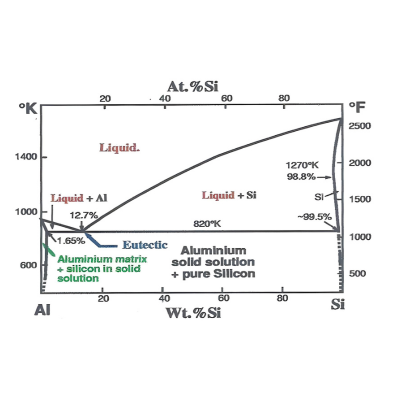



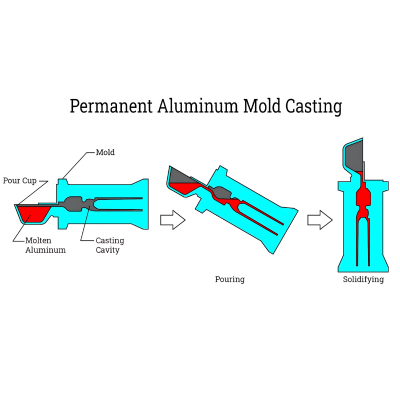
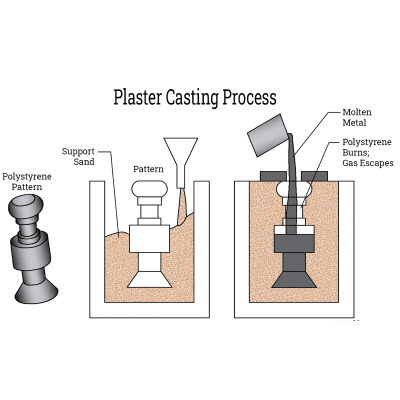
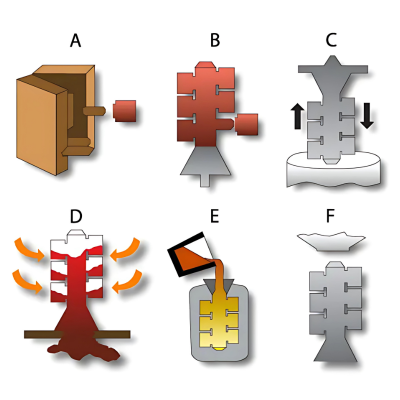


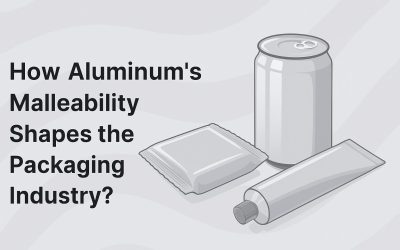

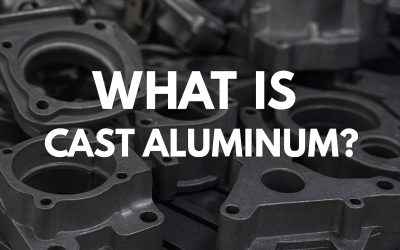
0 Comments